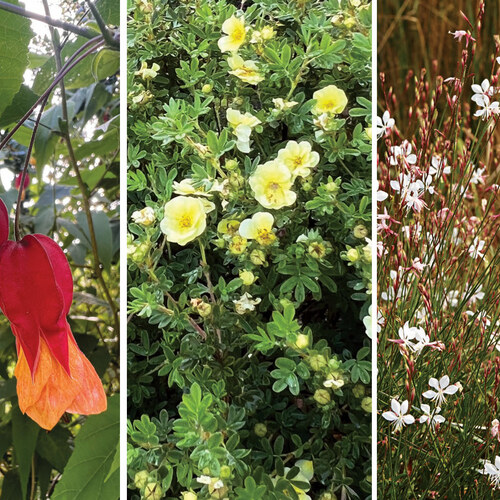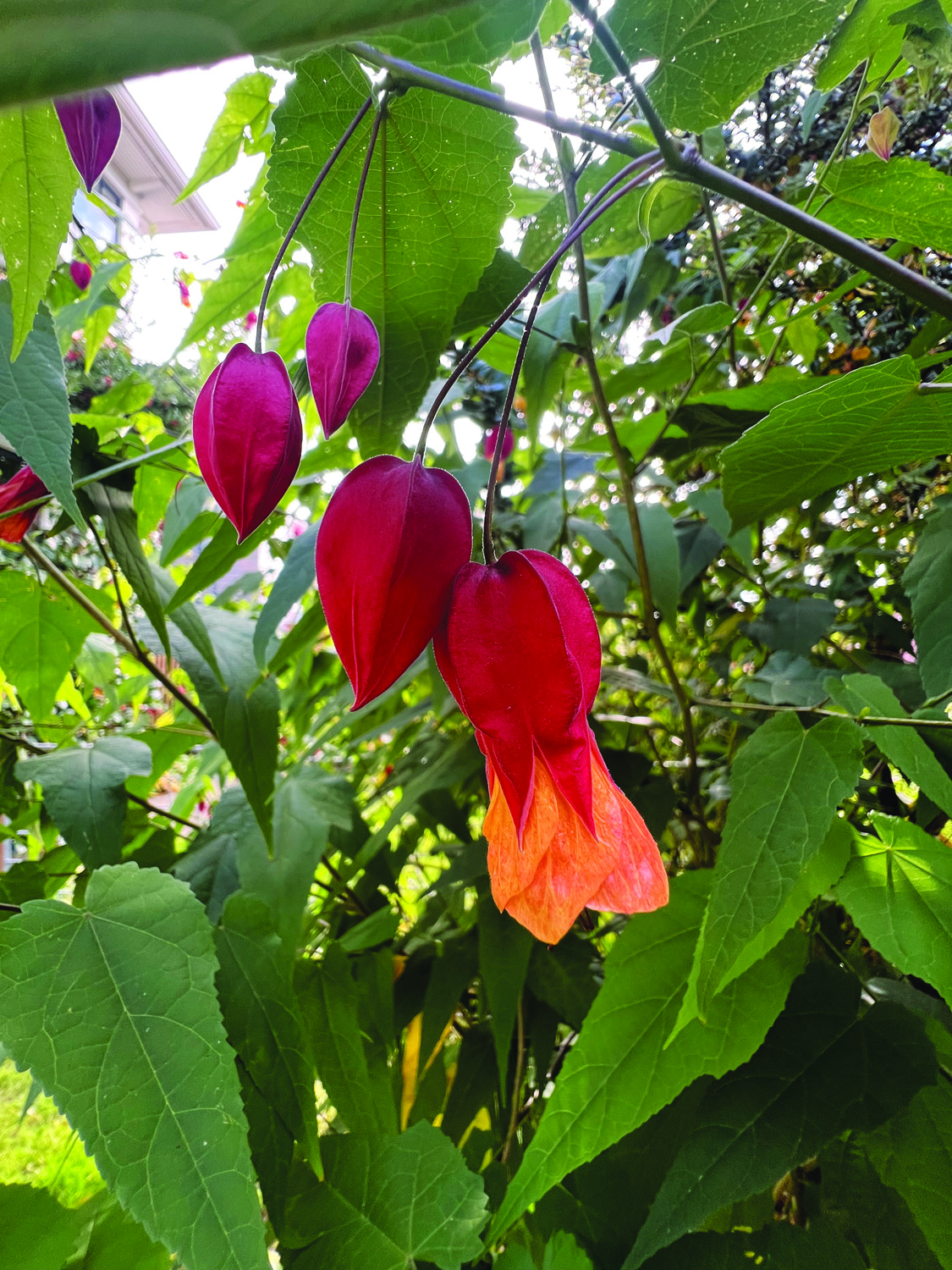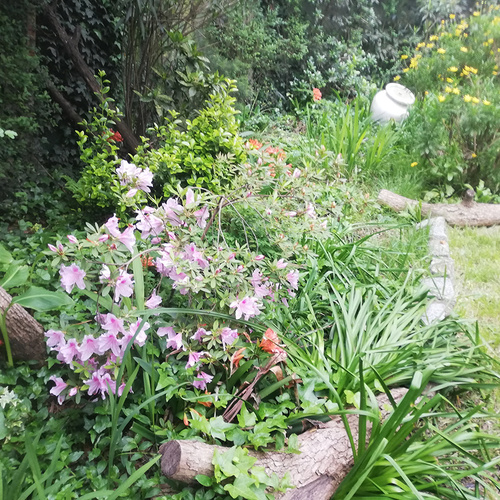Expert Picks: Long-Blooming Perennials for Sunny Gardens in the Pacific Northwest
If you’re looking for plants that provide blooms all season long and not just for a short time, these expert picks for the Pacific Northwest are sure to brighten your garden. Discover four long-blooming perennials for sun that thrive in the region’s mild summers and wet winters, bringing reliable color to sunny beds and borders from summer into fall.
See more regional picks: Endangered Plants in the Pacific Northwest
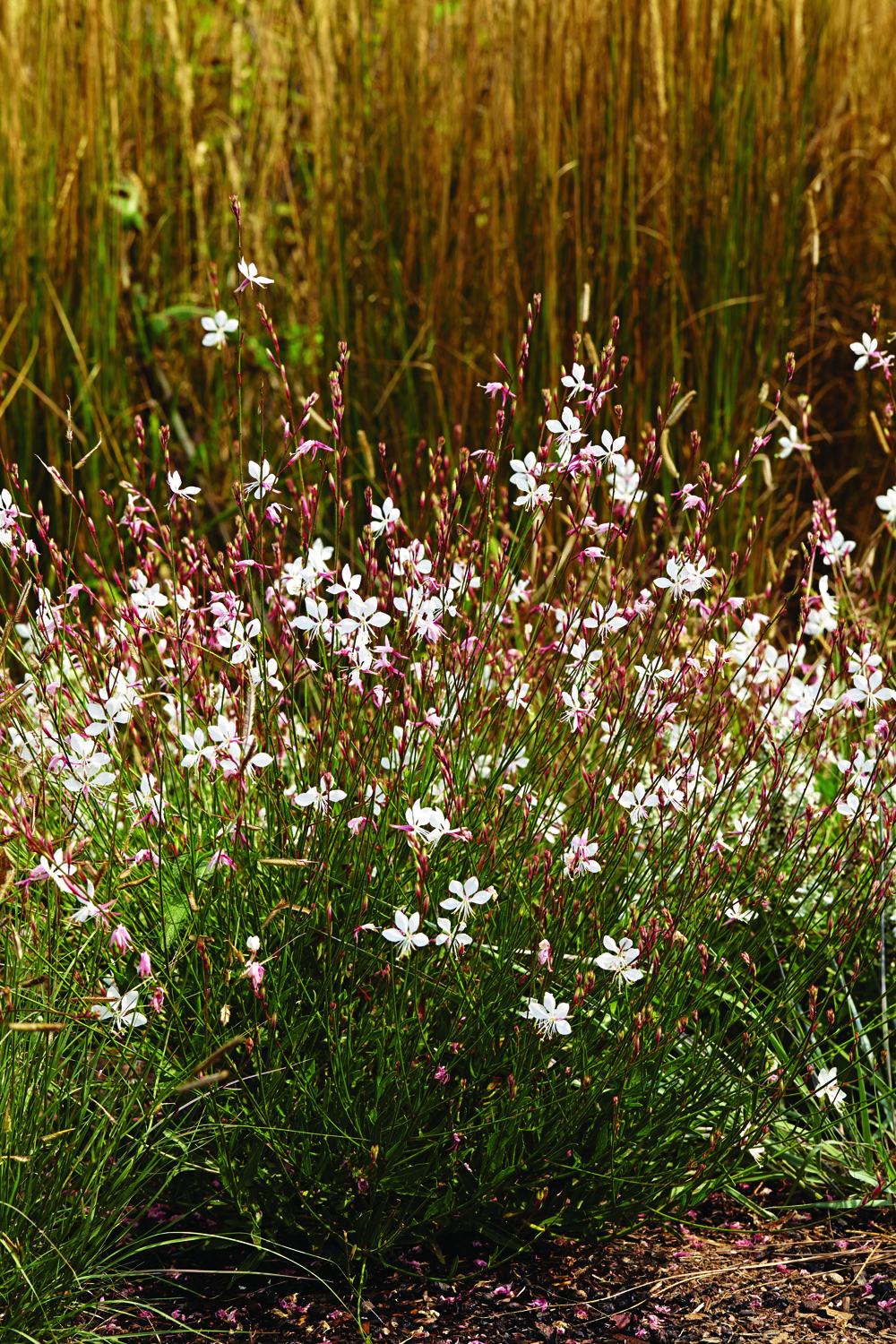
‘Whirling Butterflies’ guara
Name: Oenothera lindheimeri ‘Whirling Butterflies’
Zones: 5–9
Size: 2 to 3 feet tall and wide
Conditions: Full sun to partial shade; average to dry, lean, well-drained soil
Native range: Southern United States and northern Mexico
The name ‘Whirling Butterflies’ captures the spirit of this reliable, long-blooming sun perennial. From May through September, it produces large masses of small white flowers with pink sepals on flexible, whiplike stems. When the breeze kicks up, the flowers whirl and flutter above the delicate foliage. This plant propagates easily through layering, as the branches tend to root where they touch the ground. It will seed gently but is not invasive. Cut back the woody stems hard in early spring so the new growth stays uniform and upright. You can also plant it alongside shorter perennials to keep its branches upright, and it can be cut back regularly throughout the growing season to keep it looking neat and balanced.
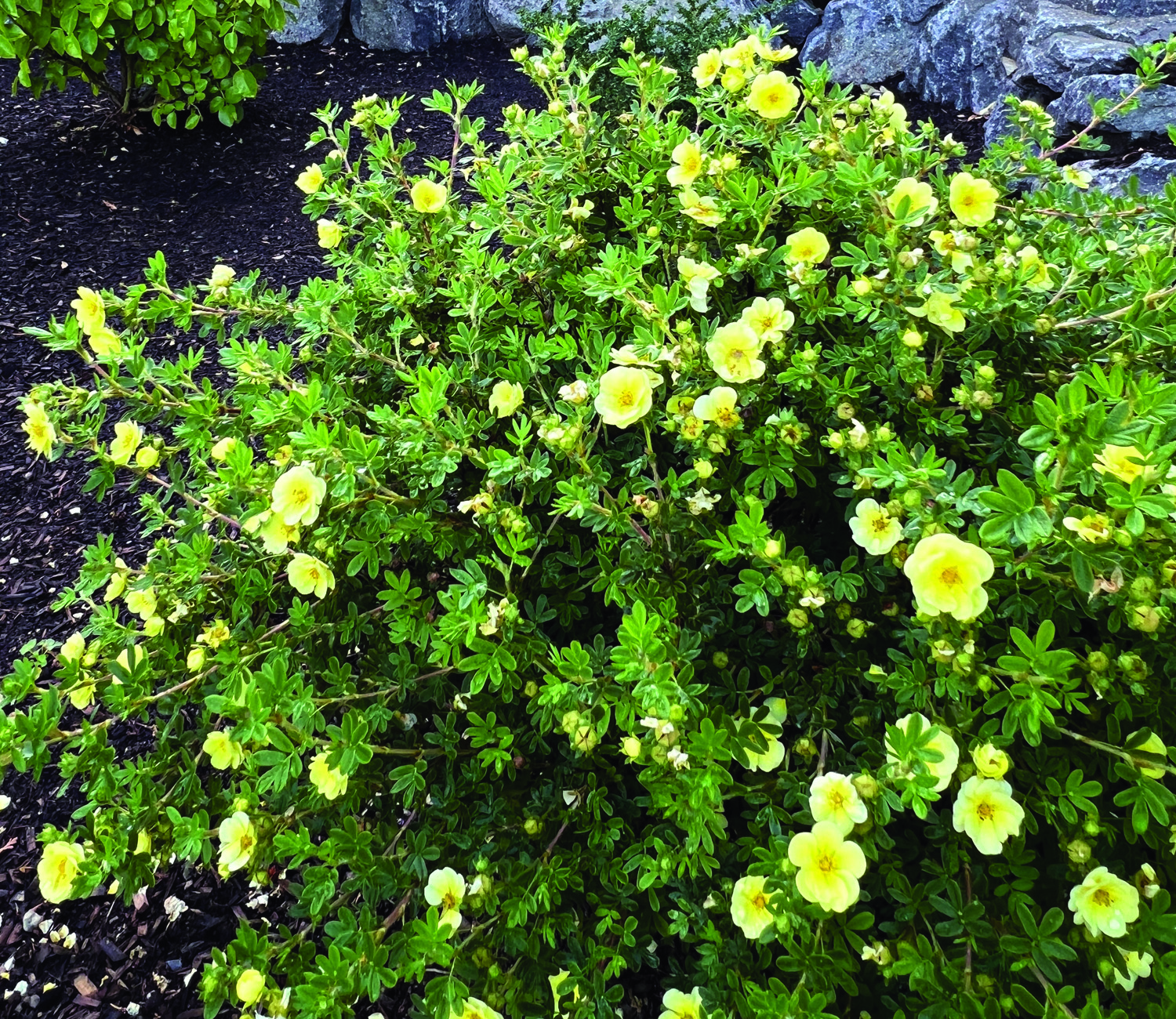
Name: Potentilla fruticosa ‘Bailmeringue’
Zones: 2–7
Size: 2 to 3 feet tall and wide
Conditions: Full sun to partial shade; lean, well-drained soil
Native range: North America, Europe, and northern Asia
Lemon Meringue™ is not a diva but deserves attention as a floriferous, drought-tolerant option that is perfect for brightening a small space. The common name, cinquefoil, refers to the five leaflets that make up its pinnate, slightly hairy leaves, which deer and rabbits tend to leave alone. This cultivar’s double flowers are easy on the eyes, and their soft yellow color stands out well against the dark foliage. The blooms are present from June through September and serve as a good source of pollen and nectar for insects and bees. This deciduous shrub needs very little maintenance, as it grows slowly. Use it as a low hedge or ground cover, or mix it with drought-tolerant grasses in xeriscape planting.
Brazilian bellflower
Name: Callianthe megapotamica (syn. Abutilon megapotamicum)
Zones: 7–10
Size: 3 to 5 feet tall and wide
Conditions: Full sun to partial shade; rich, evenly moist soil
Native range: Brazil, Uruguay, and Argentina
Brazilian bellflower is the hardiest of all the Abutilons I have trialed over the years. My shrub is more than 10 years old, and even though it is growing in partial shade, it blooms continuously from early summer until frost. This species has a distinct flower shape that looks like a round red lantern with golden-yellow petals poking out of the bottom like a little skirt. Cultivars like ‘China Bells’ and ‘Sunset’ have yellow-orange petals that give them a softer, less dramatic look. In spring this plant can appear to be dead, with withered branches and no leaves. Prune it back, and new sprouts will soon emerge from the base and from the remaining live wood.
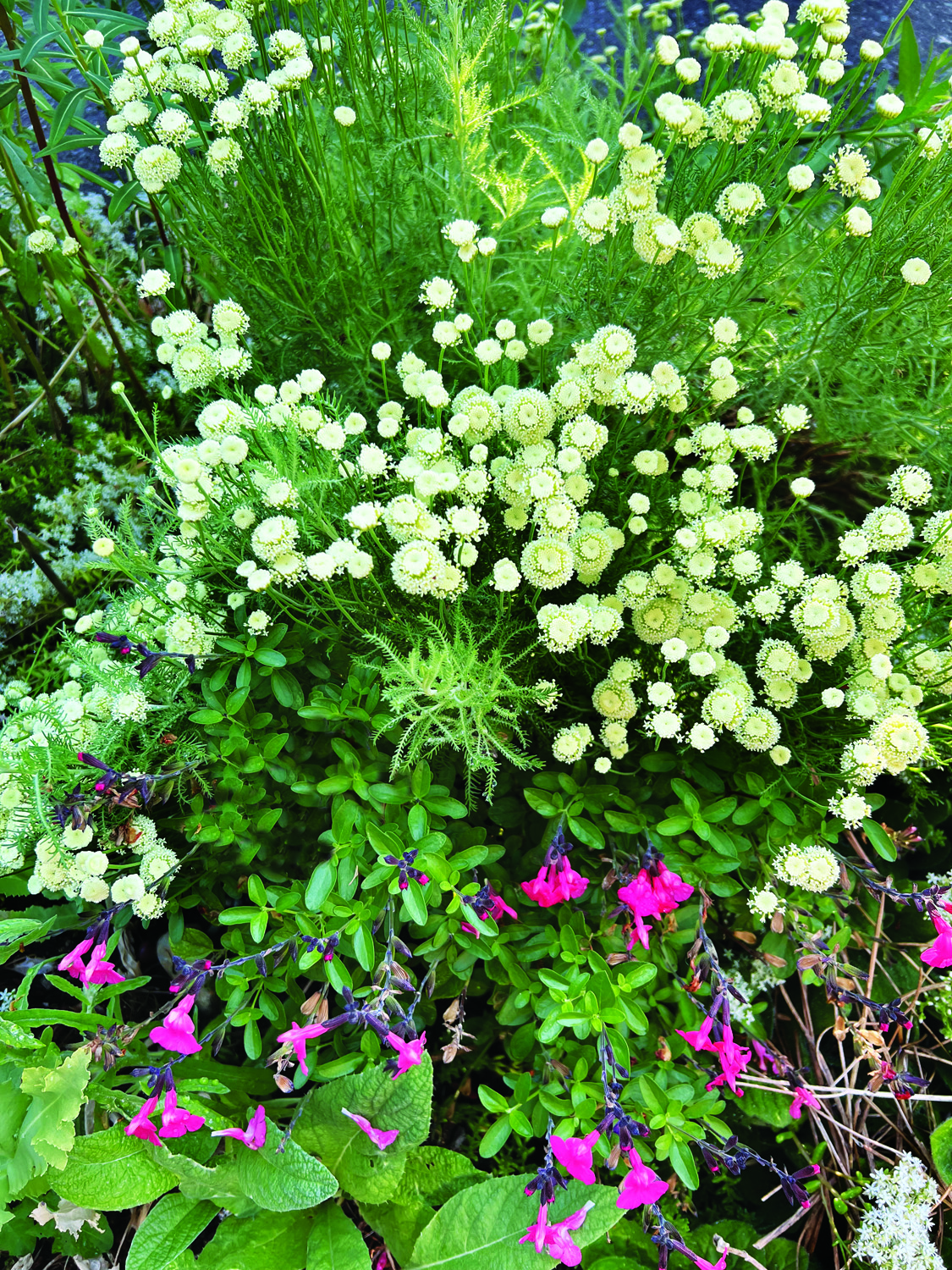
‘Lemon Queen’ lavender cotton
Name: Santolina neapolitana ‘Lemon Queen’
Zones: 5b–10
Size: 2 to 3 feet tall and wide
Conditions: Full sun; average to dry, well-drained soil
Native range: Western and central Mediterranean
I had never fallen in love with a lavender cotton until I met this one. Gone are the acid-yellow flowers common to most of the species. ‘Lemon Queen’ has lovely gray-green foliage and creamy button flowers that sit rigidly at the edges of the plant. The color combination and feathery foliage texture is sublime. This long-blooming sun perennial grows into a neat dome the first season, and thereafter it can be cut back just above the woody stems to keep it from splaying apart. Pruning is a delightfully fragrant affair. I shape it in early spring, then do a second cut in late summer after it blooms. This encourages another flush of flowers that lasts until the first frost. Plant it with other drought-tolerant perennials for a relaxed but sophisticated border.
Photos courtesy of the contributor unless noted otherwise.
Fine Gardening Recommended Products

Gilmour 5/8″ x 25′ Round Weeper Soaker Hose
Fine Gardening receives a commission for items purchased through links on this site, including Amazon Associates and other affiliate advertising programs.
Lightweight garden hose is made of 100% recycled vinyl for clog resistant, consistent soaking in the garden or around foundations. Can be installed above or below ground to efficiently deliver water directly to plant roots. Can be linked with other hoses to create your own DIY garden drip irrigation system, and is flexible for easy storage and space saving.

D&X Garden Sprinkler
Fine Gardening receives a commission for items purchased through links on this site, including Amazon Associates and other affiliate advertising programs.
– The Sprinkler is made of durable ABS Plastic, Base connector: Approx. 1/2″ ; Side connector: Approx. 3/4″
– 12 flexible nozzles that you can set in any direction, simply bend hoses to customize new watering patterns
– 360 degree coverage of 3000 sq. ft area
– 3.5 x 4 x 6 inches

Dramm 17050 50′ ColorStorm 1/2″ Standard Soaker Hose
Fine Gardening receives a commission for items purchased through links on this site, including Amazon Associates and other affiliate advertising programs.
– Provides sufficient amounts of water to the garden without the hassle of hand watering
– Conveniently waters garden and beds
– 50 ft. by 1/2 inch diameter made from recycled material; lifetime guarantee
– Made in the USA




